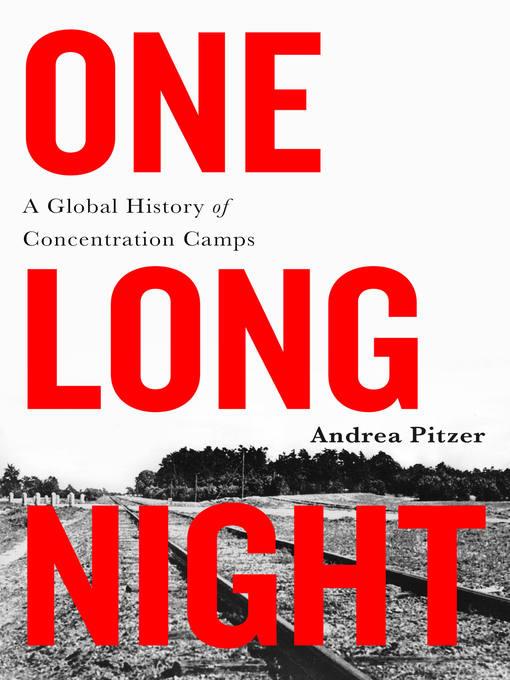
One Long Night
A Global History of Concentration Camps
- اطلاعات
- نقد و بررسی
- دیدگاه کاربران
نقد و بررسی

June 12, 2017
In this engrossing history, Pitzer (The Secret History of Vladimir Nabokov) traces the origins of concentration camps and follows their development over more than a century. In the 1890s, the Spanish military in Cuba rounded up indigenous civilians to separate them from the rebels who insisted on Cuban independence. Atrocities—rape, murder, starvation—ensued. Americans recoiled at Spain’s treatment of the reconcentrados, one of the reasons that the U.S. declared war against Spain in 1898. Yet by 1901, the U.S. military implemented a similar system in the Philippines to subdue anti-American rebels. Pitzer excels at focusing this sprawling history on the personal level. The suffering of Boer families and their African servants is told from the perspective of British welfare activist Emily Hobhouse, who tirelessly worked to help the detainees. The most astonishing story belongs to Margarete Buber-Neumann, a German-born Communist living in Moscow when she was arrested and imprisoned in one of Stalin’s Gulags in 1938. A little more than a year later, as part of a prisoner exchange between Germany and Russia, she ended up at Ravensbrück, one of the Nazi concentration camps. The end of WWII didn’t bring an end to these camps and Pitzer ends where she began—in Cuba, at Guantánamo Bay. “Like a cunning virus,” Pitzer chillingly observes, “they evolve to survive.” Agent: Katherine Boyle, Veritas Literary.

Starred review from June 15, 2017
Dispelling the assumption that concentration camps began and ended in Nazi Germany.Pitzer (The Secret History of Vladimir Nabokov, 2013), the founder of the Nieman Storyboard at Harvard's Nieman Foundation for Journalism, examines what she deems "the defining atrocity" of the 20th century. Drawing on memoirs, histories, and archival sources, she offers a chilling, well-documented history of the camps' development. The precursor of concentration camps, she contends, arrived with the Spanish Empire, which pursued a policy of relocating and imprisoning native populations in the Americas. Later, in the American Civil War, the Andersonville prisoner-of-war camp was "a harbinger of the civilian concentration camps that were to come." These burgeoned during the Boer War at the end of the 19th century, during which scores of camps held prisoners of war, civilians identified as enemies, and more than 100,000 black Africans. Dysentery, typhoid, and pneumonia coursed through camp populations. That model of incarceration was carried on by Germans in South Africa, who built camps at military posts to contain the despised Herero and use them for forced labor. Every man, woman, and child "wore stamped, numbered metal tags," and some children became the personal slaves of German officers. Characterized by barbed wire, rotting food, and brutal, hierarchical supervision, the first decade of concentration camps presaged the proliferation of camps for enemy aliens during World War I. In 1914, combatant nations herded hundreds of thousands of civilians in networks of camps located far from the battlefield, "a deliberate choice to inject the framework of war into society itself." The perception of civilians as a threat justified genocide such as the persecution of Armenians by Turkey and of Jews, homosexuals, and the disabled by Nazis. In grim detail, Pitzer portrays camps in Cuba, the Philippines, Russia, China, and North Korea as well as the rounding up of Japanese citizens in the U.S. She sees Guantanamo as a contemporary instance of "indefinite detention without trial," which is "the hallmark of a concentration camp system." A potent, powerful history of cruelty and dehumanization.
COPYRIGHT(2017) Kirkus Reviews, ALL RIGHTS RESERVED.

August 1, 2017
Pitzer acknowledges that mass incarceration of various groups is an ancient practice but views the modern concentration camp as a product of developments that made it possible for governments to gather information and employ methods of tight control to confine great numbers of innocent people without resort to judicial processes. Pitzer (The Secret History of Vladimir Nabokov, 2013) begins her thoroughly researched and unflinching history in 1890s Cuba, where Spanish general Valeriano Weyler confined thousands of suspected or even potential rebel sympathizers in brutal, disease-ridden compounds, where many died. She then proceeds across time and around the globe to examine not only the infamous Nazi and Soviet camps but also such lesser-known and smaller-scale mass detentions as the roundup of Dutch-speaking civilians by British authorities in South Africa during the Boer War and the detainment of German and Austrian aliens living in the United Kingdom during WWII. Pitzer clearly regards concentration camps as inherently evil, a perspective put to the test given current religion-based terrorism. An informative and unsettling survey of the abuses states can inflict on targeted groups.(Reprinted with permission of Booklist, copyright 2017, American Library Association.)




دیدگاه کاربران